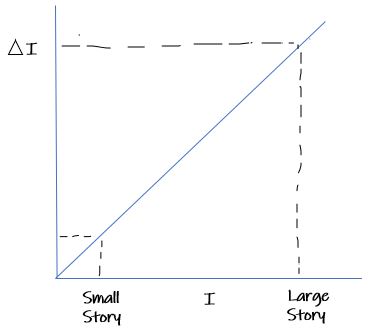Many have asked why Fibonacci series is used for the story point estimates. Though I agree, it is not the only way to estimate based on relative sizing and many of them use different methods, Fibonacci sequence is used frequently.
In this article, I would like to help you to get a better understanding of the fundamentals behind using the Fibonacci series. And you won’t even need a deck of cards for this one.
Example Fibonacci sequence – estimated effort
Let’s take a Fibonacci Scale example where you are asked to hold a weight of 2 Kgs.

If the weight is increased by .02 Kgs (i.e. 2.02 Kgs is the total weight), it would be very negligible to notice the difference by the person who lifts the weight especially when they are unaware that it was increased by 0.02 Kgs.
The same is true when a person is asked to lift the weight of 5 Kgs and then it is increased by 0.05 Kgs without them noticing, the person wouldn’t feel the increase in the weight.
Weber in 1834 realised that there is a particular threshold and the ratio, the background intensity to the incremental threshold, is relatively constant.
In the equation, K is constant.
1Δ⊥̅⊥̅=?
ΔI = IK

Coming back to Fibonacci sequence in this series of numbers, an accurate estimate would be 1, 2, 3, 5, 8,13,21,34,55…
However, this modified Fibonacci sequence in Agile estimation world is 1,2,3,5,8,13,20,40…
Each estimation is modified just for the sake of easiness of use of 20,40,80 and 100.
As you understand from the above sequence of Fibonacci numbers, it is clear that 2 is 2 times bigger than 1. However, the gap between 3 to 5 or even between 5 to 8 is not double. These nonlinear sequences work well in the high-level estimates as they reflect great amount of uncertainty. This will prevent one user story being too close to another.
The user stories that would be worked out in upcoming PI planning, would better to be estimated within one order of magnitude.
Enjoy using the planning poker with the above-mentioned Fibonacci series and get better high-level and accurate story estimates. This estimation method will improve project management.


